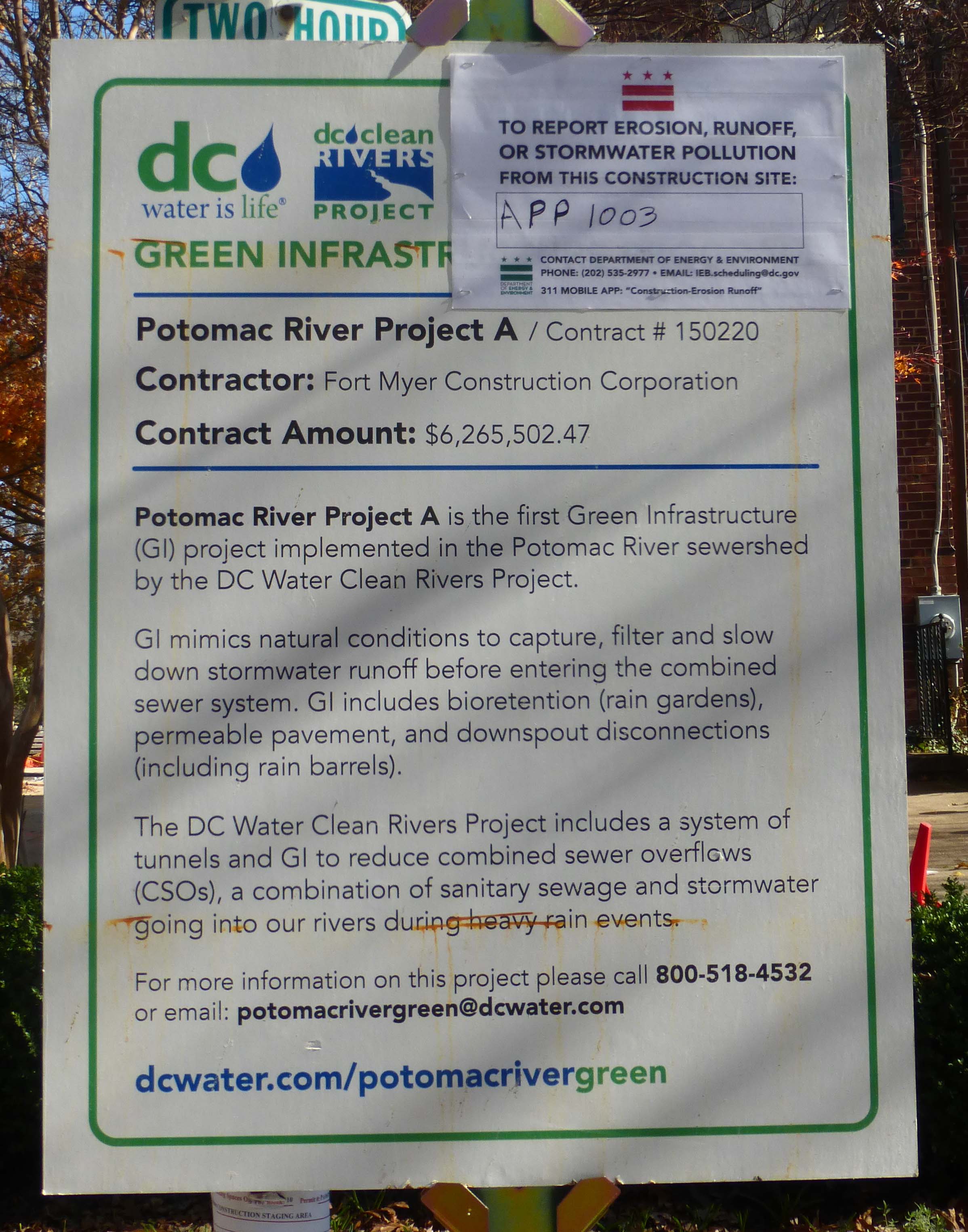Green Alley Check-In
/Kishan Putta relates noise and vibration issues that some burleith residents experienced during green alley construction.
Editor’s Note: Originally published on February 5, this post has been updated to include information about the February 26 Committee on Transportation and the Environment performance oversight hearing on DC Water and Washington Aqueduct chaired by Ward 3 Councilmember Mary Cheh. Click here for the link to the hearing.
Testifying about DC Water's green alley construction in Burleith were ANC 2E commissioner Kishan Putta (1:14:51) and Burleith residents Stephen Brown (3:31:37) and Colleen Powers (3:36:29). Councilmember Cheh’s responses begin at 1:29:49 and 3:37:55. Her Q&A with DC Water CEO David Gadis & EVP/Operations & Engineering Biju George begins at 4:22:15.
Please email concerns about any aspect of the work to Amanda Zander, Green Infrastructure Public Outreach Coordinator & Private Space Implementation Coordinator, and copy bca@burleith.org.
By Ann Carper
Photos by Ann Carper.
Since the end of October 2018, Burleith has experienced a rolling tide of Alley Closed and Road Work Ahead signs, orange construction cones, stacks of gray pavers, heavy equipment, and dozens of workmen from Fort Myer Construction.
As most of us know by now, contractors for DC Water’s DC Clean Rivers Project are installing 19 permeable pavement segments in nine of our alleys. To date 10 alley segments have been completed, and the final nine alley segments are under construction with all work expected to be finished in March. (Click here for an interactive map showing DC Water’s permeable pavement alley locations.)
Now that we’re midway through the project, I thought I’d check in with Amanda Zander, Green Infrastructure Public Outreach Coordinator & Private Space Implementation Coordinator, for DC Water’s DC Clean Rivers Project. I emailed her several questions that had been raised on the listserv and conveyed to the BCA board and others about the work and the accompanying inconveniences related to parking, notification, and the construction itself. Ms. Zander’s responses follow.
Q: Why are we doing this?
A: The DC Clean Rivers Project is DC Water's ongoing and federally mandated program to reduce combined sewer overflows into the District's waterways: the Anacostia and Potomac Rivers and Rock Creek. This massive infrastructure and support program is designed to capture and clean water during heavy rainfalls before it ever reaches our rivers. The project comprises a system of tunnels, diversion sewers (grey infrastructure), and green infrastructure (GI). GI, which includes green alleys, allows stormwater runoff to infiltrate through the pavement and into the ground. Any excess runoff is stored and slowly released back into the combined sewer system. Burleith and Glover Park are part of Potomac River Project A. Work in Glover Park, which was recently completed, included parking lane permeable pavement and bioretention (rain gardens) in addition to permeable pavement in the alleys.
Q: How are neighbors being notified?
A: Notifications are delivered to residents impacted by construction at least 2 weeks prior to work beginning. Door hangers reminding impacted residents of the alley closure start-date are delivered to residents during the week prior to the work being performed. These notifications are also provided to ANC 2E Commissioners, Georgetown University’s Office of Neighborhood Life, and the Mayor’s Ward 2 Liaison Office.
Q. Why is the work taking so long and why is it being done in the winter, when weather problems could be anticipated?
A: This is a federally mandated project that required this project to be completed by late Spring of 2019. In order to meet this deadline, work had to occur over the winter.
Q. Why isn’t the work staggered better geographically, so fewer neighbors are inconvenienced at a time?
A. We understand the inconvenience of alley closures preventing parking and access to the back of homes during construction, and in response phase our work to minimize the amount and duration of parking impacts. The contractor will open up access to completed alley sections as soon as possible to provide access to back of home parking.
Q. Between having to move our cars from the alleys, heavy equipment and materials taking up space, and now ride-share cars in our neighborhood, parking is a real problem. How can you help?
A. We can help residents obtain Zone 2 temporary parking permits and handicap accessibility permits as well as provide the option to park at the Safeway during the construction. Residents requiring assistance should contact Amanda Zander at (202) 787-4142.
Q. What other help can you provide?
A: We can help residents move their trash and recycling bins from their alley to in front of their house. Please call the project hotline (800-518-4532) or contact Amanda Zander at (202) 787-4142.
Q. Once this work is done, is this it, or will there be other green infrastructure installations in Burleith in the future? Your website says “From 2019 to 2020, the GI practices will be monitored and assessed to evaluate performance.”
A. Per the terms of the Consent Decree, this first project will be monitored and a practicability and performance analysis will be conducted and submitted to the EPA. Depending on the outcome of this analysis there may be up to two additional green infrastructure projects in the neighborhood that would be constructed by 2030.
Related Reading
Green Alleys to Come, August 7, 2018 web post
Work began at the end of October 2018 on the first Burleith alley (paralleling 39th Street above T).
Workmen place concrete to define the edges of the green alley.
Sheets of waterproofing line the excavated alley to collect run off. Water travels through a perforated PVC pipe connected to the sewer system where it is slowly released back into the system after the rain storm has ended.
Gravel is installed on top of the waterproof lining and pipe.
After the permeable paving is laid, smaller gravel is swept in between the spaces.







